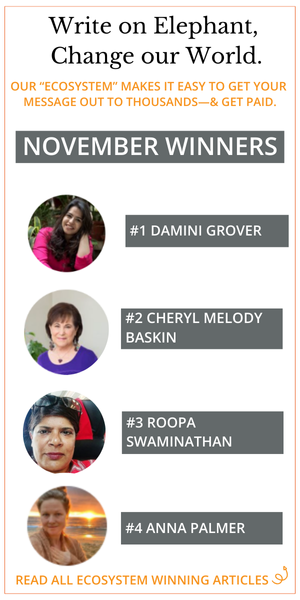Saffron may be the most prized spice in Ayurveda.
This is because, according to Ayurveda, it is the most potent of all ojas-building foods for the body.
Ojas translates as “immunity” or “vitality,” and is said to reside in the heart.
Ojas (OH-jas) is considered to be the most refined by-product of digestion. It is an essence of nature and a cosmic substance that directly influences our experience of life. In addition to vitality and immunity, our vigor, skin, sleep, digestion, spirituality and physical strength are all directly influenced by our reserve of ojas.
Saffron is harvested from the tiny stigmas of the Crocus sativus flower. Recent scientific research is giving credibility the Ayurveda’s reverence for the spice and why our ancestors used to compare saffron’s value to gold. (1)
Numerous studies suggest that saffron offers a wealth of health benefits including mood support, reduction in dietary cravings, as well as enhanced learning and memory support. Saffron may offer important support for the body’s natural immune response during regular chemical exposure to environmental pollutants as well as during periods of detoxification. (2)
Crocetin, which is the natural chemical that gives saffron its color and some of its health properties, can dye liquids a rich yellow color up to 150,000 times its own weight. (1) A small pinch is a traditional dose to support building ojas in the body. The crocetin in saffron has also shown intriguing effects in supporting the body’s central nervous system function. (3)
The other health-promoting constituents of saffron are safranal and crocin, which are members of the carotenoid or vitamin A family. These constituents have shown to support a healthy immune response against foreign microbes. (4) Perhaps the reason for all the compelling science behind saffron is that it increases oxygen diffusion into the plasma of the blood and specifically into the lungs and brain. (5)
Unfortunately, the crocuses that are breaking through the spring thaw are not the saffron-producing type.
The Crocus sativus, from which the saffron comes, is a bulb that is harvested in the autumn. That said, you can find planted bulbs in nurseries or online that can be planted this spring to enjoy your very own crocus saffron tea in fall. After the autumn harvest of saffron, like most spices, it is traditionally saved and used in cooking throughout the winter, spring and summer as an all-season or tri-doshic spice.
However, before you run out to buy some crocus bulbs, there is one thing you should know: It takes about 160,000 crocus flowers to make about a pound of saffron, which also makes saffron prohibitively expensive. (1)
The good news is that a little goes a long way.
In the spring, when the harvest is more austere, consuming 30mg (about 1 measuring tsp) of saffron has been shown to reduce cravings by 55 percent in one study, making it easier to navigate through eating in sync with the springtime harvest and encouraging a natural fat metabolic state. (6)
This is nature’s major message each spring, helping us all become better fat burners.
Fat burning not only supports weight loss, but also helps us to detoxify and stabilize our blood sugar and mood. Saffron has also shown to support mood stability in times of stress and around the menstrual cycle, (2,7) as well as cognitive function—likely due to its ability to support the healthy function of nerve cells. (2,8)
Saffron is one of the most powerful spices on your spice rack and many of us forget to use it. Make an effort to use saffron regularly and enjoy!
Recipe: Using Foods to Build Ojas
To boost ojas and gain the predicted benefits of ojas-producing foods and herbs, consider making the following recipe for an ojas tonic before bed. This is about as yummy of a drink as you will ever have.
1. Add very small amounts of each to 1 cup of milk (non-homogenized cow, almond or coconut) as you slowly bring it to a boil:
- Chopped dates
- Chopped almonds
- Coconut meat or flakes
- Saffron
- Ghee
- Cardamom
2. Add ojas-building herbs to the milk (1/4 tsp of each):
- Shatavari (Woman with 100 husbands, sometimes spelled Shatawari)
- Ashwaganda (Strength or sweat of ten horses)
*A convenient blend of all of the above ojas-building foods is called Ojas Nightly Tonic and is available in LifeSpa’s online store and at our onsite Ayurvedic boutique.
3. Once the milk, herbs and ojas-building foods and spices are cooked and off the flame, add 1/2 tsp of ojas-building raw honey.
Drink one cup of the ojas-building hot milk tonic each night for three months to rebuild ojas levels and support sleep, immunity and overall health.
~
References:
- Saffron (Crocus sativus) History and Domestication By K. Kris Hirst, Archaeology Expert
- Clinical Applications of Saffron (Crocus sativus) and its Constituents: A Review. Drug Res (Stuttg). 2014 May 21 [Epub ahead of print] PMID:24848002
- Intestinal formation of trans-crocetin from saffron extract (Crocus sativus L.) and in vitro permeation through intestinal and blood brain barrier. Phytomedicine. 2015 Jan 15;22(1):36-44. doi: 10.1016/j.phymed.2014.10.009. Epub 2014 Nov 11.
- Bioactive compounds of Crocus sativus L. and their semi-synthetic derivatives as promising anti-Helicobacter pylori, anti-malarial and anti-leishmanial agents. J Enzyme Inhib Med Chem. 2015 Mar 13:1-7. [Epub ahead of print]
- Crocetin from saffron: an active component of an ancient spice.Crit Rev Food Sci Nutr. 2004;44(3):155-72.
- Satiereal, a Crocus sativus L extract, reduces snacking and increases satiety in a randomized placebo-controlled study of mildly overweight, healthy women. Nutr Res. 2010 May;30(5):305-13. doi: 10.1016/j.nutres.2010.04.008.
- Crocus sativus L. (saffron) in the treatment of premenstrual syndrome: a double-blind, randomised and placebo-controlled trial. BJOG. 2008 Mar;115(4):515-9. doi: 10.1111/j.1471-0528.2007.01652.x.
- Saffron in the treatment of patients with mild to moderate Alzheimer’s disease: a 16-week, randomized and placebo-controlled trial. J Clin Pharm Ther. 2010 Oct;35(5):581-8. doi: 10.1111/j.1365-2710.2009.01133.x.
Author: Dr. John Douillard
Editor: Emily Bartran
Photo: glasseyes view/Flickr


 Share on bsky
Share on bsky





Read 0 comments and reply